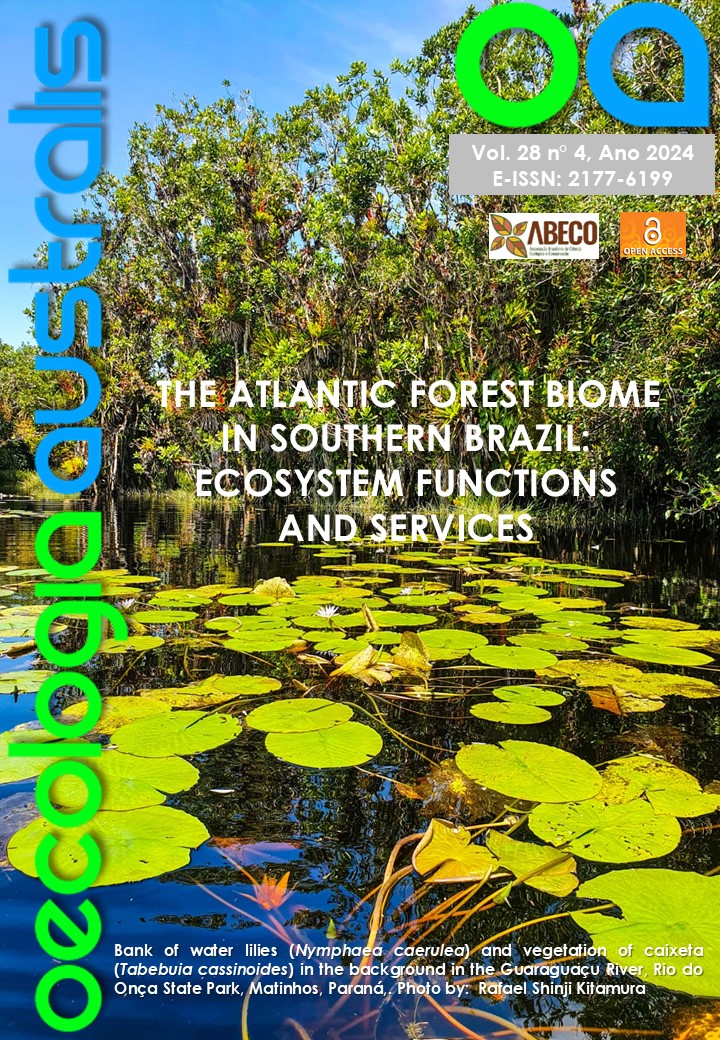THE CONNECTIONS BETWEEN RIPARIAN VEGETATION AND WATER QUALITY IN THE ATLANTIC FOREST
Connection between riparian vegetation and water quality
DOI:
https://doi.org/10.4257/oeco.2024.2804.03Abstract
The vegetation near water bodies constitutes the primary component of riparian zones, and its significance for the health and maintenance of aquatic ecosystems is widely acknowledged. Degradation of riparian vegetation constrains the capacity of environments to serve as buffers against the influx into water bodies of contaminants and nutrients resulting from human activities, thereby directly exerting a negative impact on water quality. Here, we conducted a systematic review of studies focused on the effect of riparian vegetation on the environmental quality of aquatic ecosystems within the Brazilian Atlantic Forest. Between 2000 and 2023, a total of 421 articles were identified, accessible through platforms such as Web of Science (Thomson Reuters), Scopus (Elsevier), and the ‘Portal Periódicos da CAPES’. 24 articles fit within the criteria of our investigation, and all indicated the importance of riparian vegetation to aquatic bodies. Riparian vegetation was directly examined in 91% of the studies. The majority of studies on freshwater aquatic ecosystems were conducted in streams. 70% of the publications employed biological groups as response variables, and benthic macroinvertebrates were the most frequently studied group. There was a clear trend of research growth. Given the myriad threats and pressures confronting the Atlantic Forest due to disruptive land uses and associated anthropogenic activities, studies assessing the conservation of riparian vegetation and its correlation with water quality in this biome are very informative. In future studies, other biodiversity parameters could be used, such as functional diversity, in association with water quality and the functioning of freshwater ecosystems. Assessing the presence of invasive species in the composition of riparian vegetation could also be evaluated to determine if it directly affects water quality. Such efforts are vital for safeguarding water resources and preserving the ecosystem services furnished by aquatic ecosystems.


